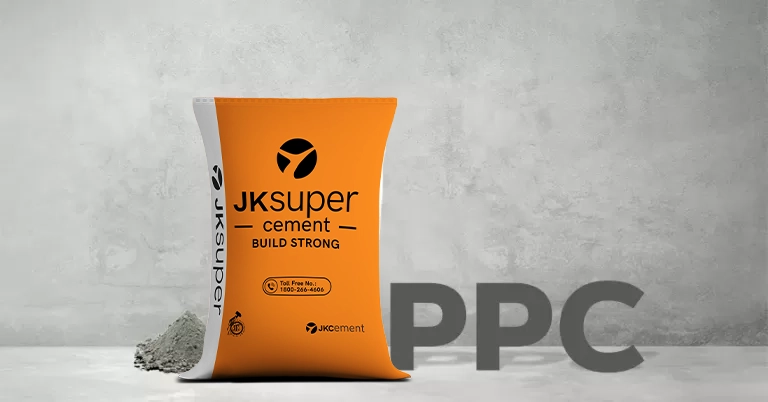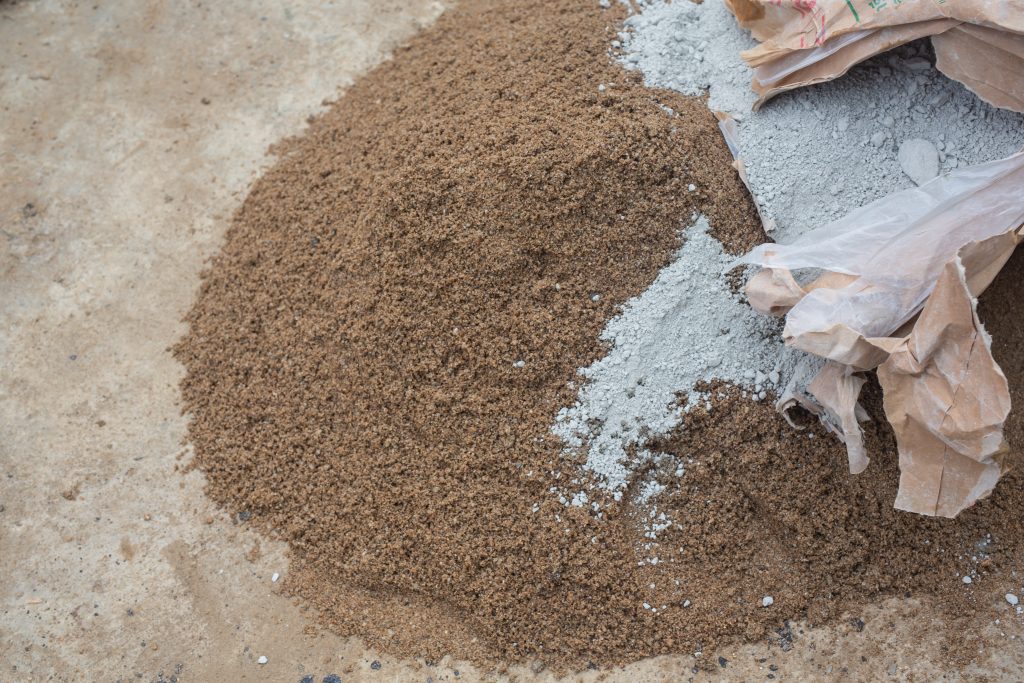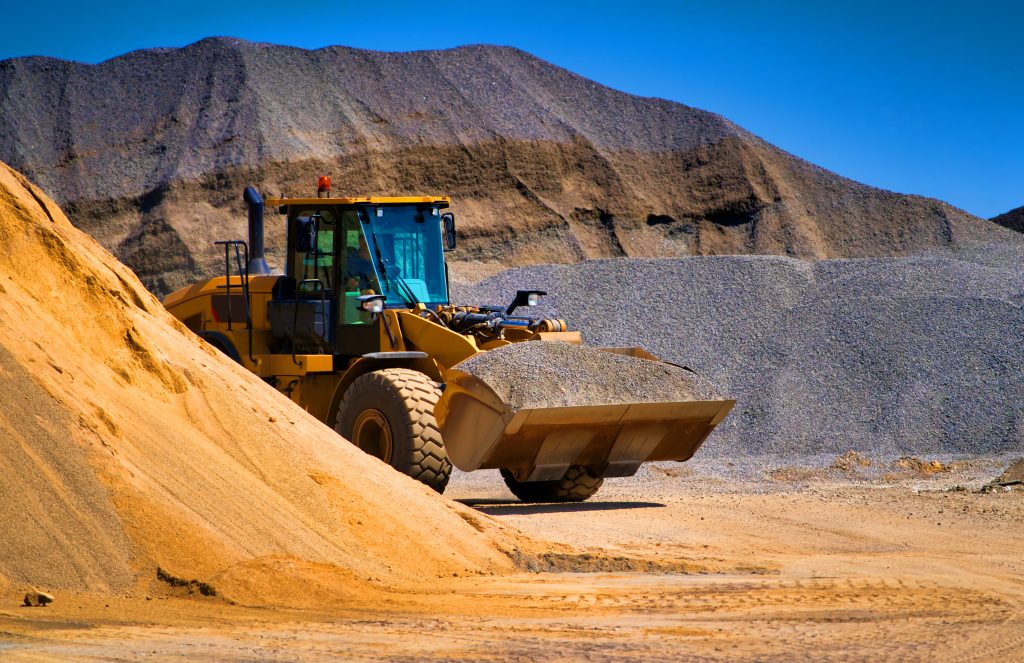When it comes to cement types, Ordinary Portland Cement and Portland Pozzolana Cement may probably be the top two names that spring to mind. While both cement types are used to build robust structures, the variations in compositions, strength, and setting time result in different applications. It is important to understand these differences to choose appropriately between the two for construction projects. This article will help you learn about OPC and PPC types and the differences between the two.
What is OPC?
Ordinary Portland Cement, or OPC, is one of the most widely used cement in India. The raw materials used to manufacture OPC are clinker, gypsum, and small amounts of other substances as performance improvers. Due to its relatively high compressive strength, OPC is used predominantly for general construction purposes, including the construction of buildings, bridges, roads, flyovers and so on.
What is PPC?
Portland Pozzolana Cement, or PPC, is a blended cement type made from Portland clinker and pozzolanic materials such as fly ash, volcanic ash, or silica fumes. The pozzolanic substances added to Portland cement enhances its workability, durability, and resistance to sulphate attacks. These properties make PPC more suitable for construction works near water bodies where concrete comes frequently in contact with sulphate. As such, PPC is used for the construction of dams, sewage pipes, dykes, and so on.
OPC Vs PPC in cement
Here’s the difference between OPC and PPC:
Composition
OPC is made from calcareous materials containing limestone, argillaceous materials containing silica, alumina and gypsum. Small amounts of magnesia, sulphur trioxide, oxides of iron, and soda may also be added. All these materials are mixed in a fixed proportion and heated in kilns to form clinker. These clinkers are ground with gypsum to form OPC.
On the other hand, PPC is made from Portland clinker, Pozzolana materials (like fly ash, clay, pumice, shale, etc) and gypsum. These materials are intimately ground to form PPC.
Strength and durability
OPC cement gains high strength during the initial stage of casting, making it suitable for projects that require quick setting. That is why it is used where early strength is important, such as the construction of buildings and bridges.
Conversely, the strength of PPC is relatively weaker during the initial setting stage when compared to OPC. However, the long-term strength of PPC ultimately outmatches OPC, which is why it is used for building standalone houses, schools, and residential building slabs. PPC is also suited for construction purposes in areas that are in regular contact with soil or water containing sulphates.
Setting Time
Setting time is the time required for cement to harden and reach the desired consistency. OPC cement has a relatively faster setting time. OPC begins to set and harden more quickly during the initial stages, allowing for faster construction progress. Meanwhile, PPC cement has a slower setting time, although the same provides an extended time for concrete placement and finishing.
Crack resistance
Pozzolanic materials in PPC results in a denser and more impermeable concrete structure. This strengthens PPC’s use case against cracking due to shrinkage, thermal expansion, or external factors. On the other hand, OPC generates a lot of heat during the hydration process, making it less suitable for mass-concreting, where excessive heat can cause cracking.
Curing Time
Curing time, or curing of concrete, is the process of providing moisture and temperature control in the concrete to aid hydration. On that front, OPC needs a minimum curing period of 7 days. In contrast, PPC needs a minimum curing period of 10 days.
Grades
Per the Bureau of Indian Standards, OPC is available in 3 grades in India, namely 33 Grade, 43 Grade and 53 Grade. The classification made is based on compressive strength. Meanwhile, there is only one variant present for PPC.
Environmental impact
PPC cement offers environmental advantages over OPC cement in terms of carbon emissions. The use of pozzolanic materials in PPC cement reduces the reliance on clinker production, which is a carbon-intensive process. By utilising industrial by-products like fly ash, PPC cement helps in reducing carbon dioxide emissions and conserving natural resources. In contrast, carbon dioxide emissions are much greater when producing OPC.
Uses
Whether it’s OPC or PPC, both are typically suitable for general construction. OPC 33 grade cement is suitable for general construction, masonry and plastering work. OPC 43 grade can be used in high-strength concrete work while OPC 53 grade cement is used in specialised works, including precast concrete, prestressed concrete, long-span structures, bridges, etc. PPC is typically suitable for all types of construction, particularly marine and hydraulic construction and other mass concrete structures.
Explore JK Cement’s Portland Pozzolana Cement and range of Ordinary Portland Cement.
FAQs
Are there regional variations in OPC and PPC cement availability in India?
Yes, there can be regional variations in availability. OPC is more widely available and commonly used across the country, but in regions with a significant presence of coal-fired power plants, PPC that utilises fly ash may be more readily available.
Are there any standards or certifications specific to OPC and PPC cement in India?
Yes, the Bureau of Indian Standards (BIS) has specific standards for both OPC (IS 269:2013) and PPC (IS 1489:2015) cement types. These standards outline the requirements and specifications that cement manufacturers must adhere to in India.
Can OPC and PPC be used together in a single project?
Yes, OPC and PPC cement can be used together in a project by blending them in specific proportions, depending on the desired properties. However, if the proportions are incorrect, the strength and durability of the concrete might not be up to the mark.
Which cement type is more suitable for large concrete structures?
PPC may be more suitable for large concrete structures as it exhibits a lower heat of hydration compared to OPC. This property reduces the risk of thermal cracks in massive concrete elements.
What is PSC in cement?
Portland Slag Cement (PSC) is another type of cement formed by intimately grinding Portland clinker with granulated blast-furnace slag. Slag is a by-product formed by smelting ores.














